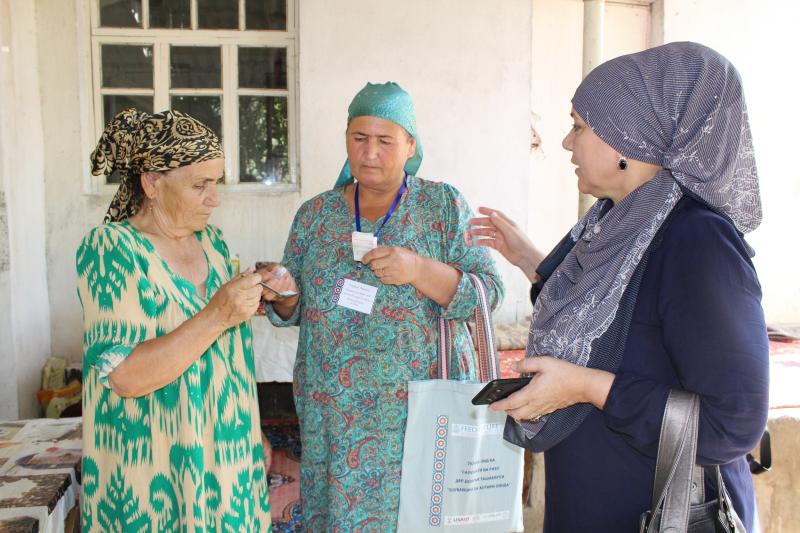Where We Work
See our interactive map


Community health volunteers work across maternal and child health, hygiene, agriculture, and advocacy in Tajikistan's Khatlon region. Photo courtesy of Tajikistan Health and Nutrition Activity.
We sat down with Roman Yorick to look at the results—and the people behind them.
Roman Yorick and his team in Tajikistan have plenty to be proud of.
Yorick leads IntraHealth International’s work there, where we address maternal and child health through nutrition and agricultural programs and work to improve hygiene and sanitation in health care facilities and communities.
And we’ve gotten great results—more women are receiving antenatal care, more families are using improved agriculture and poultry farming techniques, and more communities now have access to sanitary latrines and trained masons to build them.
But it’s the community health volunteers doing a lot of this work that spark particular pride in Yorick. We sat down with him to get a closer look at the people behind the results.
Whatever we achieve, we achieve because of community health volunteers. This model has helped us gain traction in the communities where we work. Nearly 2,000 people, mostly older women who are mothers-in-law, housewives, or retired, have found a new purpose in their lives by serving their communities and improving maternal and child health and nutrition. We meet with them every month—and we can see that unwavering enthusiasm.
People don’t realize how motivated and engaged the community health volunteers are. They aren’t paid—they're true volunteers who work without any monetary incentive.
Whatever we achieve, we achieve because of community health volunteers.
They are excited about their contribution to their communities and villages. It’s really energizing to participate in the monthly meetings with them, where we reengage, provide further education, and collect data.
One area to improve is iron deficiency anemia. More than 40% of women of reproductive age and nearly the same percentage of children under five have an iron, folate, or B12 deficiency in Tajikistan, which contributes to childhood stunting.
High fertility rates and inadequate birth spacing also contribute to anemia, childhood malnutrition, and stunting in Tajikistan. We’d like to see family planning services in place to help families space pregnancies and ensure adequate nutrition for all babies.
We’ll transfer the management of volunteers to the government and support them in doing so. Our plan is to ready what are called Healthy Lifestyle Centers—public health and education centers for the local community—to absorb the volunteers, ensuring sustainability and nurturing the volunteers’ independence and self-reliance.
IntraHealth International leads the USAID-funded Feed the Future Tajikistan Health & Nutrition Activity. With our partner Abt Associates, we are working to improve health and nutrition in Tajikistan, particularly among women and children in the Khatlon oblast. The activity integrates high-quality maternal, newborn, and child health care at the family, community, clinical, and national levels, with an emphasis on nutrition, sanitation, and hygiene.
This piece is part of IntraHealth's celebration of 40 years of commitment to health workers. Follow along: #TheFutureOf #IntraHealth40 #HealthWorkersCount
Get the latest updates from the blog and eNews




